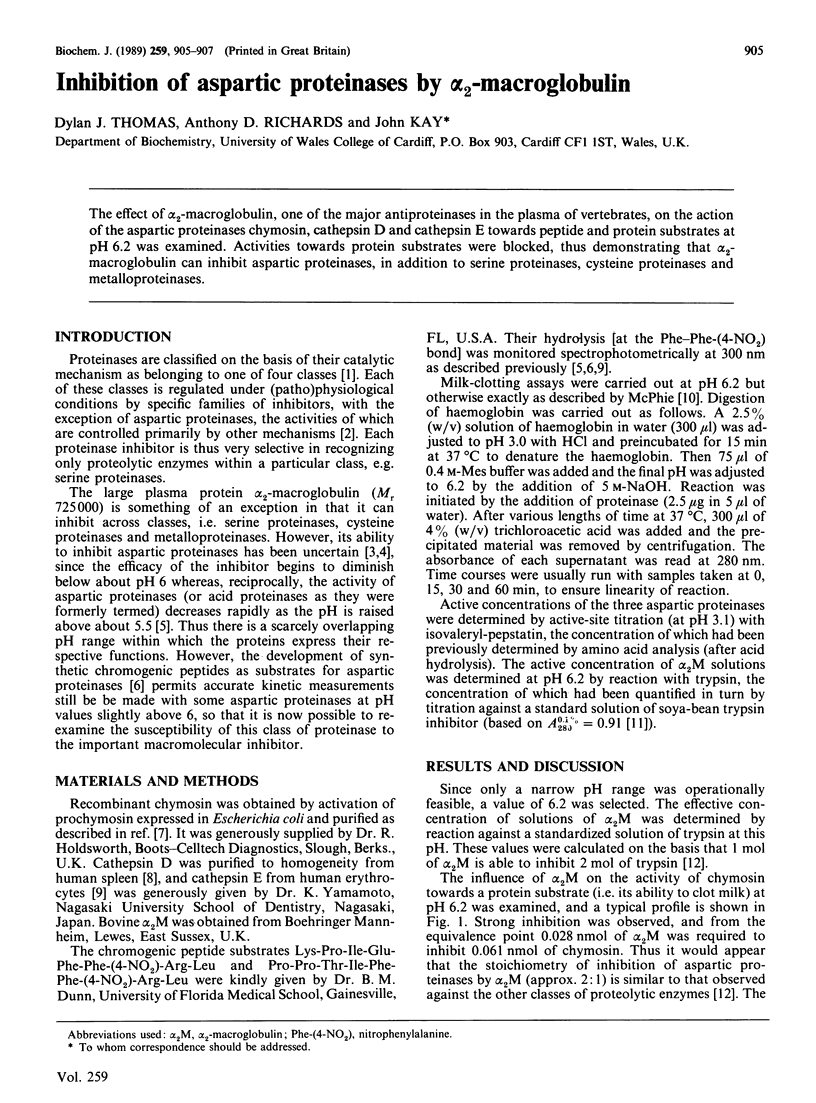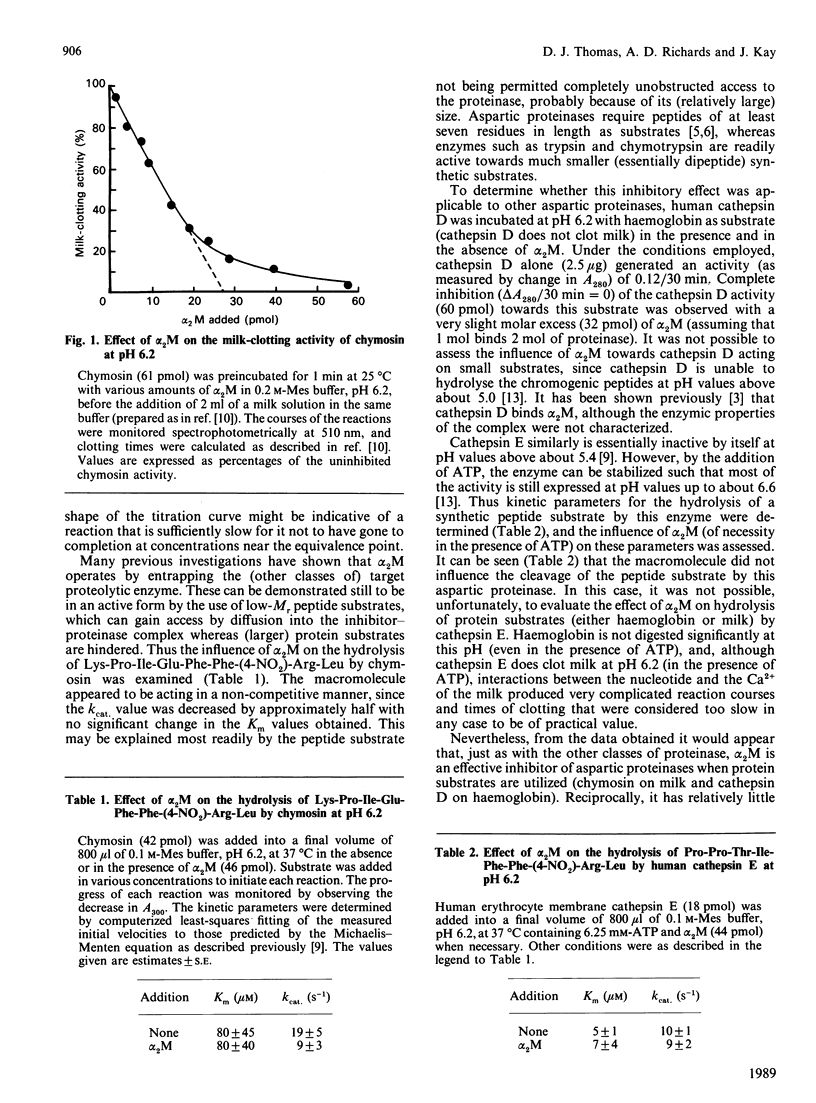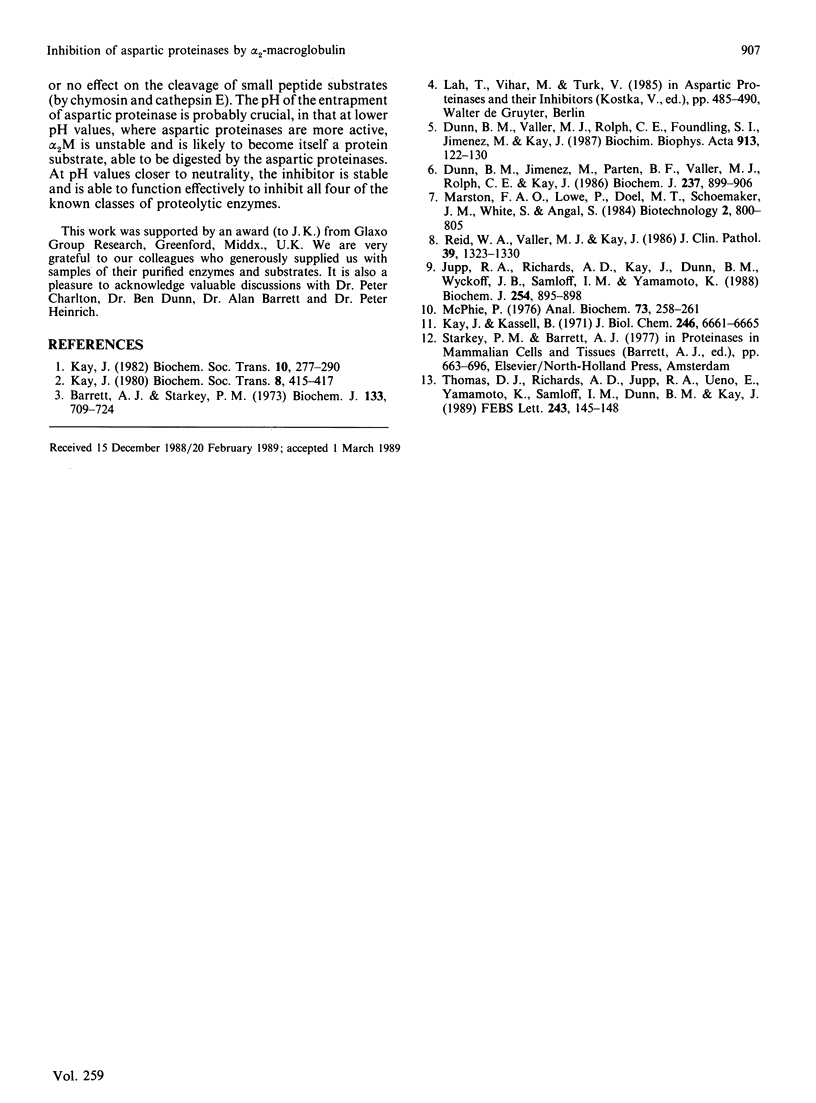Abstract
The effect of alpha 2-macroglobulin, one of the major antiproteinases in the plasma of vertebrates, on the action of the aspartic proteinases chymosin, cathepsin D and cathepsin E towards peptide and protein substrates at pH 6.2 was examined. Activities towards protein substrates were blocked, thus demonstrating that alpha 2-macroglobulin can inhibit aspartic proteinases, in addition to serine proteinases, cysteine proteinases and metalloproteinases.
Full text
PDF


Selected References
These references are in PubMed. This may not be the complete list of references from this article.
- Barrett A. J., Starkey P. M. The interaction of alpha 2-macroglobulin with proteinases. Characteristics and specificity of the reaction, and a hypothesis concerning its molecular mechanism. Biochem J. 1973 Aug;133(4):709–724. doi: 10.1042/bj1330709. [DOI] [PMC free article] [PubMed] [Google Scholar]
- Dunn B. M., Jimenez M., Parten B. F., Valler M. J., Rolph C. E., Kay J. A systematic series of synthetic chromophoric substrates for aspartic proteinases. Biochem J. 1986 Aug 1;237(3):899–906. doi: 10.1042/bj2370899. [DOI] [PMC free article] [PubMed] [Google Scholar]
- Dunn B. M., Valler M. J., Rolph C. E., Foundling S. I., Jimenez M., Kay J. The pH dependence of the hydrolysis of chromogenic substrates of the type, Lys-Pro-Xaa-Yaa-Phe-(NO2)Phe-Arg-Leu, by selected aspartic proteinases: evidence for specific interactions in subsites S3 and S2. Biochim Biophys Acta. 1987 Jun 17;913(2):122–130. doi: 10.1016/0167-4838(87)90320-7. [DOI] [PubMed] [Google Scholar]
- Jupp R. A., Richards A. D., Kay J., Dunn B. M., Wyckoff J. B., Samloff I. M., Yamamoto K. Identification of the aspartic proteinases from human erythrocyte membranes and gastric mucosa (slow-moving proteinase) as catalytically equivalent to cathepsin E. Biochem J. 1988 Sep 15;254(3):895–898. doi: 10.1042/bj2540895. [DOI] [PMC free article] [PubMed] [Google Scholar]
- Kay J., Kassell B. The autoactivation of trypsinogen. J Biol Chem. 1971 Nov;246(21):6661–6665. [PubMed] [Google Scholar]
- Kay J. Proteolysis--a degrading business but food for thought. Biochem Soc Trans. 1982 Aug;10(4):277–280. doi: 10.1042/bst0100277. [DOI] [PubMed] [Google Scholar]
- Kay J. Regulation of proteolysis: implications for the control of protein breakdown within the cell. Biochem Soc Trans. 1980 Aug;8(4):415–417. doi: 10.1042/bst0080415. [DOI] [PubMed] [Google Scholar]
- McPhie P. A turbidimetric milk-clotting assay for pepsin. Anal Biochem. 1976 May 21;73(1):258–261. doi: 10.1016/0003-2697(76)90166-4. [DOI] [PubMed] [Google Scholar]
- Reid W. A., Valler M. J., Kay J. Immunolocalization of cathepsin D in normal and neoplastic human tissues. J Clin Pathol. 1986 Dec;39(12):1323–1330. doi: 10.1136/jcp.39.12.1323. [DOI] [PMC free article] [PubMed] [Google Scholar]
- Thomas D. J., Richards A. D., Jupp R. A., Ueno E., Yamamoto K., Samloff I. M., Dunn B. M., Kay J. Stabilisation of cathepsin E by ATP. FEBS Lett. 1989 Jan 30;243(2):145–148. doi: 10.1016/0014-5793(89)80117-6. [DOI] [PubMed] [Google Scholar]


